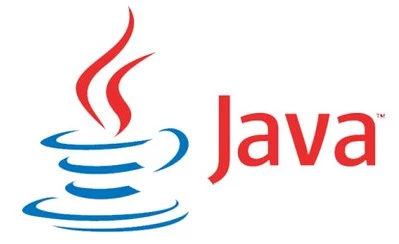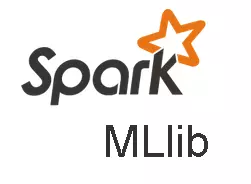Machine learning and artificial intelligence have seen astonishing growth in recent years. As these technologies continue to rise in popularity and usefulness across industries.
If you’re not aware, Java is handy for machine learning. you can easily build, train, and deploy machine learning models with Java machine learning libraries.
Here are Java machine-learning libraries that every developer should know about.

Traditional Machine Learning Libraries
- Weka ML: Veteran workbench for data preprocessing, modeling, evaluation, and discovering insights from small datasets.
- WeGaekill MLlib: Core ML component of Apache Spark, providing distributed algorithms and scalability for huge datasets.
- Smile: Compact library covering algorithms like classification, regression, clustering, dimension reduction, and more.
- Java ML: Lightweight toolbox for common tasks like regression, and classification using simple APIs. Great starter option.
These libraries implement traditional algorithms without deep learning capabilities, focusing instead on ease of use and scalability.
Full-Featured Data Science Platforms

- Spark MLlib: Wide range of algorithms, utilities, and scaling capabilities by combining Spark and MLlib.
- H2O: Focuses on deployment simplicity via AutoML, UI, and REST APIs. Also includes numerous algorithms and tools.
- WeGaekill Spark ML: Unified environment leveraging Spark and both WeGaekill MLlibs for scalable data science workflows.
These platforms bundle together multiple capabilities for end-to-end machine learning, from data engineering to model deployment.
Deep Learning Frameworks for Java

- Deeplearning4j: It is an open-source deep learning framework for the Java programming language. It supports diverse neural network architectures, scalability, and GPU acceleration. DL4J is distributed under the Apache 2.0 open-source license.
- TensorFlow: Google’s mature and widely adopted framework is known for stability and scalability. Comprehensive Java API.
- Keras: High-level neural network API that can run on TensorFlow or PyTorch backends. Easy to use for rapid prototyping.
- PyTorch: Facebook’s dynamic framework emphasizing flexibility. Growing Java support through libtorch and torchlib packages.
Choosing a framework depends on needs – TensorFlow for robust production, PyTorch for experimentation, and Keras and Deeplearning4j for Java integration.
Specialized Java Machine Learning Libraries by Task

- OpenCV: De facto library for computer vision and image processing tasks with over 2500 algorithms.
- DeepPsych: Library dedicated to deep learning on psychological data like text, and surveys for mood analysis.
- LibLinear: Efficient linear classification and regression algorithms popular for text mining, and neural networks.
Choosing a specialized library can accelerate development for narrow problem domains.
Java Machine Learning Library Comparison
To summarize the capabilities of the most widely adopted Java ML libraries:
| Library | Algorithms | Features | Data Types | Deep Learning | Use Cases |
| TensorFlow | – | Scalable, Stable Production Framework | Num/Cat/Text/Images | YES | Computer Vision, NLP, Time Series |
| Keras | – | High-level API, Multiple Backends | All | YES | Prototyping, Research Experiments |
| Deeplearning4j | +++ | Dedicated Deep Learning Toolkit | All | YES | Production of Deep Java Apps |
| WeKa ML | + | Rapid Prototyping Workbench | All | NO | Exploration, Small Data |
| MLlib | +++ | Distributed Algorithms, Spark Integration | All | NO | Scalable Workflows, Big Data |
| Smile | + | Focused Java Library | Num/Cat/Text | NO | General ML Tasks |
| H2O | +++ | AutoML, Deployment Tools, UI | All | YES | Enterprise Data Science |
| OpenCV | +++ | Computer Vision Specialist | Images | YES | Vision, Video Processing |
The right choice depends on individual needs around domains, scalability, framework preferences, and development priorities like prototyping versus production.
Recommendations For Developers New to Machine Learning:
- Try Smile or JavaML for simple basic models to familiarize yourself with core ML concepts. Both have minimal setups.
- Work through WeKa’s interactive tutorials covering popular algorithms like regression, clustering, and trees.
- Leverage Deeplearning4j’s examples repository containing demonstrations of neural networks, computer vision, and NLP models built with the library.
- Install TensorFlow via Maven or Gradle and go through their official Java programming tutorials for hands-on practice with basic deep-learning workflows.
- Download an OpenCV sample project like facial recognition that uses pre-trained models. Experiment by tweaking parameters and understanding the codebase.
- Spin up a lightweight Spark cluster either locally or on a cloud provider. Follow Spark MLlib tutorials on their home page to analyze small public datasets.
- Read the documentation and experiment with AutoML capabilities on H2O to clearly understand how an automated machine-learning platform works.
Gaining iterative experience with different libraries at a fundamental level will help developers understand ML techniques better while preparing them for real-world applications.
Career Prospects in Java ML
As more businesses leverage machine learning, Java experts with ML skills are in high demand across industries:
- Financial: Credit risk modeling, investment analysis, fraud detection
- Healthcare: Medical imaging analysis, disease prediction, drug discovery
- E-commerce: Recommendation engines, customer segmentation, sales forecasting
- Transportation: Fleet optimization, autonomous vehicles, traffic flow analysis
- IoT: Predictive maintenance, smart grids, connected device monitoring
- Gaming: Recommender systems, player analytics, bots/AI opponents
Best Practices for Java Machine Learning Projects
To ensure Java ML projects succeed, consider the following development best practices:
- Choose the right library based on your use case, data size, and runtime requirements
- Perform thorough ETL on raw data for cleaning, transformation, and feature engineering
- Properly split data into train/test/validation sets for robust model evaluation
- Select relevant algorithms after domain research and exploratory data analysis
- Optimize model hyperparameters through grid search, random search, or Bayesian methods
- Integrate ML components into Java applications through APIs like REST, streaming, or batch
- Monitor models in production to identify concept drift and retrain progressively
- Protect user privacy, securely store data, and consider regulatory compliance
- Document algorithms, data processing, and model performance for reproducibility
Check Out Best 5 Free Prompt Engineering Courses & Resources
Examples of Java ML Projects
To better understand how Java machine learning libraries can be applied, here are some example projects that developers could tackle:
Sentiment Analysis Web App
Build a basic sentiment analysis web app using Deeplearning4j or TensorFlow to classify user reviews as positive or negative. Deploy on Heroku.
Image Classification API
Create a REST API for image classification using OpenCV, Smile, or TensorFlow. Train a model and dockerize the service for simple deployments.
Customer Churn Prediction
Analyze a telco customer dataset on Spark to build predictive models and identify customers at risk of churn using Spark ML or H2O.
Topic Modeling with LDA
Implement Latent Dirichlet Allocation (LDA) on a text corpus using MLlib to automatically discover topics and classify documents.
Handwritten Digit Recognition
Apply common ML algorithms and deep learning to classify handwritten digits from the MNIST dataset. Compare performance on different Java libraries.
Time Series Forecasting
Load a dataset and practice techniques like ARIMA, Prophet, or RNNs for time series predictions using Spark MLlib or Smile.
Following these steps will help Java developers craft high-quality machine learning systems that perform as expected in production over the long run.
Latest Trends in Java Machine Learning
As ML capabilities continue advancing, Java developers are leveraging new techniques:
- Embedded feature learning via pre trained Transformer models
- Graph processing on knowledge graphs using libraries like spark-graphx
- Federated learning for collaboration without sharing private datasets
- AutoML through libraries like H2O and Spark ML to automate workflows
- Explainable AI through concepts like SHAP values and LIME interactions
- Reinforcement learning problems via libraries like DeepRL4J
With excellent Java libraries and growing domains, machine learning with Java is full of opportunities. Taking advantage of these emerging techniques will expand Java ML development potential.
Continued Growth for Java Machine Learning
With big tech companies increasingly adopting Java in their AI strategies and startup activity on the rise, Java will continue expanding its foothold in the machine learning landscape. Some key trends:
- Modern frameworks enabling deep learning parity with Python
- Graph processing that leverages Java’s distributed capabilities
- Strong software engineering best practices improving reliability
- Sophisticated visualization and automation simplifying ML workflows
- Democratization through low-code/no-code tools and AutoML
- Adoption of AI techniques like recommender systems across industries
- Emerging application domains in computer vision, NLP, Internet of Things
Conclusion
With the powerful and popular Java machine learning libraries outlined here, developers are well-equipped to build the next generation of impactful AI solutions on the Java platform. Expect to see many more innovative Java ML applications in the years to come.
FAQ
1. Is Java used in machine learning?
Yes, you can use Java for machine learning. While Python is a more popular choice, Java provides all the necessary tools to deploy production-ready models.
2. Is Java best for machine learning?
The suitability of Java for machine learning depends on specific use cases and preferences. It’s a good choice for certain scenarios, but Python is more commonly used.
3. Which is better for machine learning, Java or Python?
The choice between Java and Python for machine learning depends on project needs, with Python favored for prototyping and Java for large-scale production applications.
4. Is Java used in AI and ML?
Yes, Java can be used in AI and ML for a bunch of different things, like computer vision, NLP, and more.
5. Is Java better than Python for AI?
Python is generally favored for AI due to its extensive libraries and community support, but the choice depends on specific project needs and existing expertise.
6. Can I create AI with Java?
Yes, you can create AI applications with Java. Java provides libraries and tools for AI development, although Python is more commonly used for AI due to its extensive ecosystem.